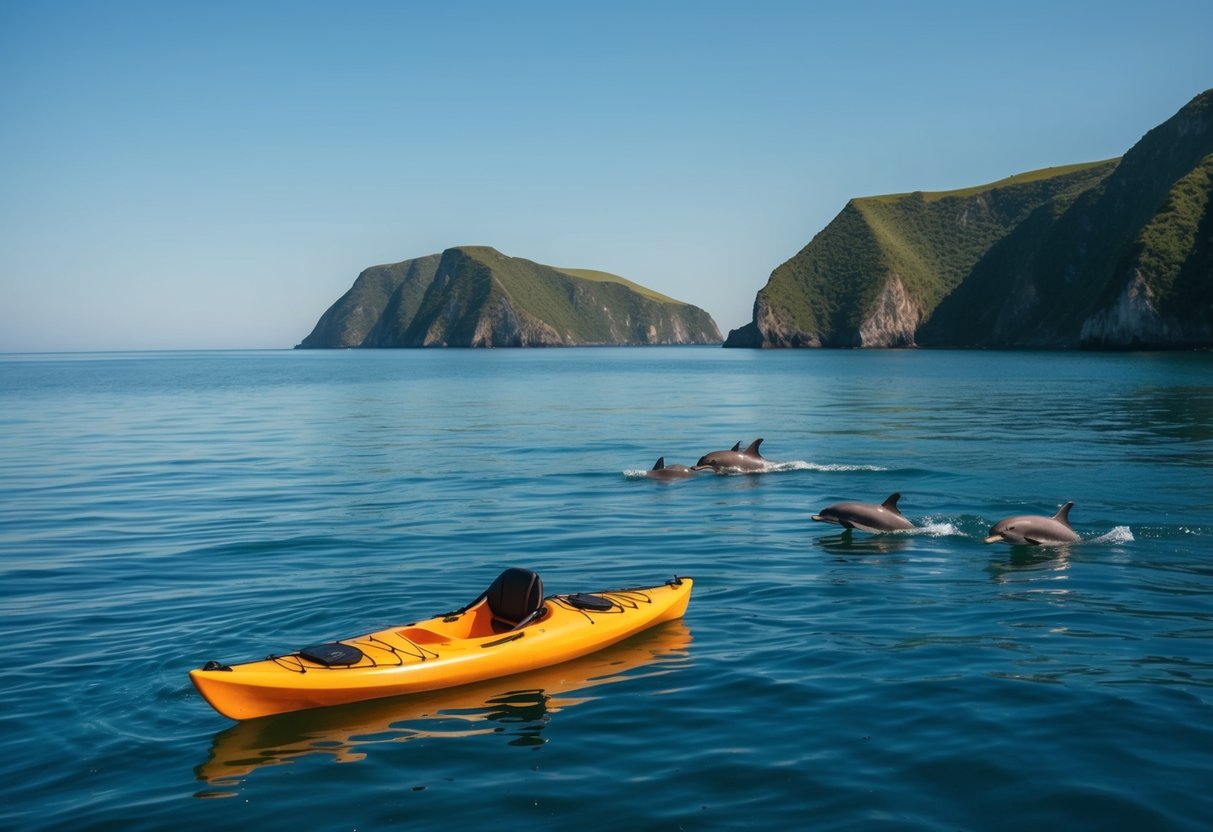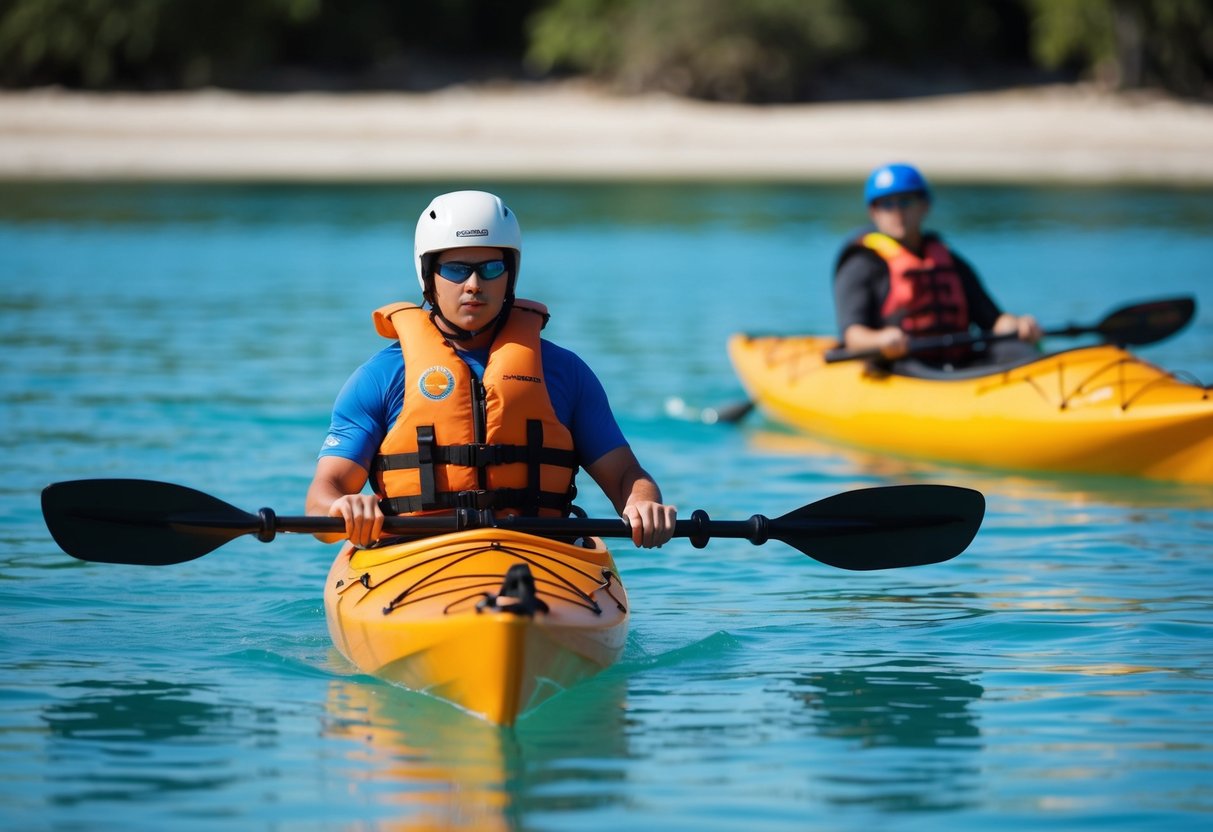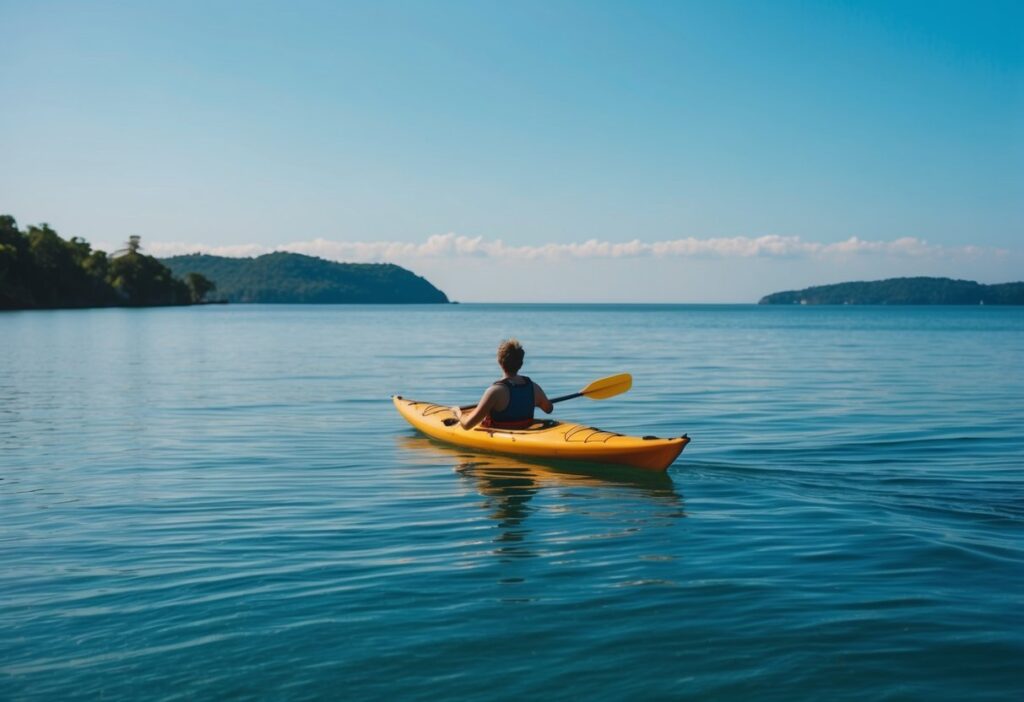Sea kayaking is an exciting way to explore coastal waters and get a great workout. We’ve been doing it for years and love the sense of adventure it brings. To learn sea kayaking, start with basic skills like proper paddling technique, capsizing recovery, and understanding tides and currents. These fundamentals will help you stay safe and have fun on the water.

Getting started is easier than you might think. Many coastal areas offer beginner-friendly classes where you can try out sea kayaking in a controlled environment. These classes typically cover essential skills and safety procedures. You’ll learn how to enter and exit your kayak, paddle efficiently, and what to do if you capsize.
Once you’ve got the basics down, practice is key. Start in calm waters near the shore and gradually work your way out as your confidence grows. Remember to always check weather conditions and never kayak alone when you’re starting out. With time and practice, you’ll be ready to tackle more challenging coastal waters and enjoy the full thrill of sea kayaking.
Key Takeaways
- Learn basic paddling techniques and safety skills before heading out to sea
- Start with guided lessons or classes to build a strong foundation
- Practice regularly in calm waters to improve your skills and confidence
Getting Started with Sea Kayaking
Sea kayaking is an exciting way to explore coastal waters. We’ll cover how to choose the right kayak and what gear you’ll need to get started safely.
Choosing the Right Kayak
When starting out, we recommend a sit-inside touring kayak. These kayaks are stable and track well in the water. They’re perfect for beginners learning the ropes.
Look for a kayak that’s 12-14 feet long. This size offers a good balance of speed and maneuverability. Make sure it has a comfortable seat and adjustable foot pegs.
Try before you buy if possible. Many shops offer demo days where you can test different models. This helps you find the best fit for your body and paddling style.
Essential Gear and Clothing
Safety comes first in sea kayaking. A well-fitting life jacket is a must. Choose one designed for paddling that allows full arm movement.
Don’t forget a spray skirt. It keeps water out of your kayak in rough conditions. A paddle float and bilge pump are crucial for self-rescue.
Dress for the water temperature, not the air. We always wear a wetsuit or drysuit in cold water. Quick-dry clothes work well in warmer conditions.
A waterproof bag keeps your essentials dry. Pack snacks, water, and a first aid kit. A marine radio or cell phone in a waterproof case is smart for emergencies.
Core Kayaking Skills and Techniques

Learning sea kayaking requires mastering essential skills and techniques. These form the foundation for safe and enjoyable paddling adventures on open water.
Basic Paddle Strokes
The forward stroke is the most important paddle technique to learn. We use it to move the kayak forward efficiently. To do it right, we reach forward, catch the water, and pull back smoothly. The key is to rotate our torso, not just our arms.
Sweep strokes help us turn the kayak. We sweep the paddle in a wide arc from front to back or back to front. This makes the kayak pivot.
The reverse stroke moves us backward. We do the opposite of the forward stroke, starting at the back and pushing water forward.
For quick turns, we use the draw stroke. We reach out to the side and pull water toward the kayak.
Mastering Balance and Control
Staying upright in a kayak takes practice. We start by getting used to the feel of the boat. Sitting properly with our knees braced inside helps us stay stable.
Edging is a key skill. We lean the kayak slightly to one side to turn more easily. This takes some practice but makes a big difference in control.
The kayak roll is an advanced move. It lets us right ourselves if we flip over. We practice in calm water first. Many paddlers find it tricky but very useful.
Bracing strokes help prevent capsizing. If we start to tip, we slap the paddle flat on the water’s surface to steady ourselves.
Navigational Skills
Reading a map and compass is crucial for sea kayaking. We always bring these tools and know how to use them. They help us plan routes and stay on course.
We learn to read the water too. Understanding tides, currents, and wind patterns keeps us safe. We check weather forecasts before heading out.
Landmarks are important for navigation. We pick out distinctive features on shore to track our progress. This helps us avoid getting lost.
Using a marine VHF radio is a good safety practice. We learn the proper channels and how to call for help if needed.
Planning Your Sea Kayaking Adventure

Getting ready for a sea kayaking trip takes some careful thought. We need to look at the weather, pick the right spot, and map out our route. Let’s break down the key things to think about.
Understanding Weather and Water Conditions
We always check the weather forecast before heading out. Wind can make paddling tough, so we look for calm days. Tides and currents are super important too. We time our trips with the tides to avoid fighting strong currents.
We keep an eye on wave height. Bigger waves are fun for skilled kayakers, but beginners should stick to calmer waters. Water temp matters too. We wear wetsuits in cold water to stay safe.
Fog can roll in fast on the coast. We bring a compass and map in case we can’t see well. It’s smart to tell someone on land our plans before we go out.
Selecting Destinations and Routes
Picking the right spot is key for a great trip. We love places with crystal clear water and stunning views. Glaciers make for amazing backdrops if we’re up north.
For beginners, we choose sheltered bays or calm lakes to start. As skills grow, we can tackle more open water. We always check if we need permits for where we want to go.
We plan our route based on our group’s skill level. Short trips close to shore are best for newbies. More experienced kayakers can go further out or do multi-day trips.
We look for good launch spots and places to take breaks. It’s nice to have a beach for lunch. We also plan where we’ll end up and how we’ll get back to our starting point.
Safety and Self-Rescue Procedures

Staying safe while sea kayaking is crucial. We’ll cover key safety practices and essential self-rescue techniques to keep you prepared on the water.
Prevention and Preparedness
Before hitting the waves, we always check the weather forecast. It’s a must for any kayaking trip. We make sure to pack essential safety gear like a bilge pump, paddle float, and whistle. A well-fitting life jacket is non-negotiable – we wear ours at all times.
We also recommend taking a sea kayaking skills course. These classes teach valuable techniques and boost confidence on the water. It’s smart to practice self-rescue in calm conditions before venturing out.
Letting someone know your plans is crucial. We always share our route and expected return time with a friend or family member.
Self-Rescue Techniques and Recovery
If you capsize, don’t panic. We’ve been there, and with practice, you can handle it. The first step is to do a “wet exit” – that means getting out of your kayak underwater.
Next, flip your kayak right-side up. Grab your paddle float and attach it to one blade of your paddle. This creates an outrigger for stability.
Now comes the tricky part – getting back in. Hook your leg into the cockpit and pull yourself up onto the back deck. Slide into the seat, then use your bilge pump to clear out water.
We can’t stress enough how important it is to practice these moves. They might seem tough at first, but they become second nature with time.


